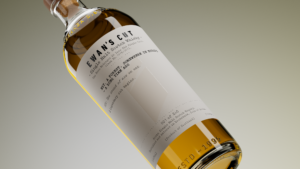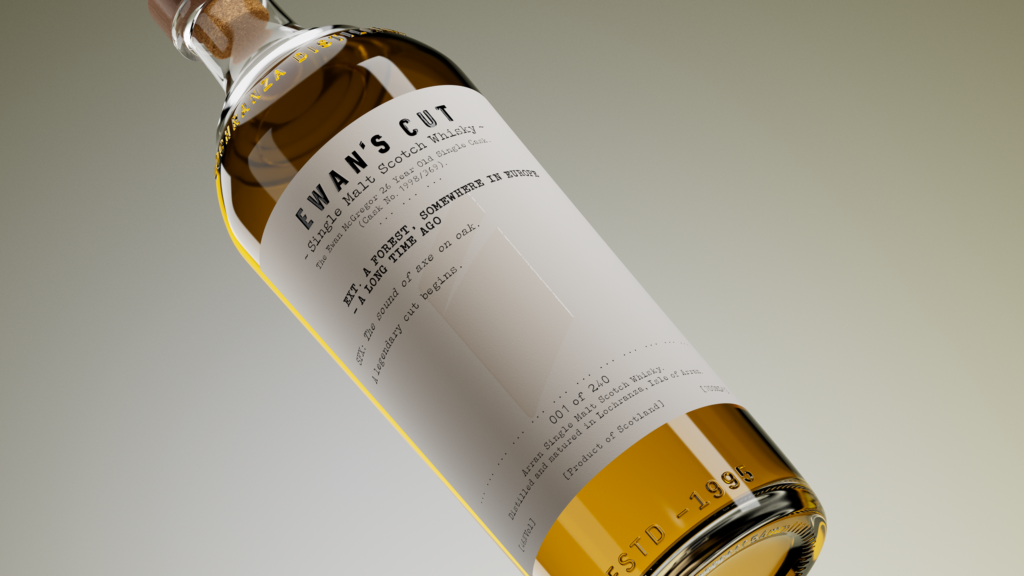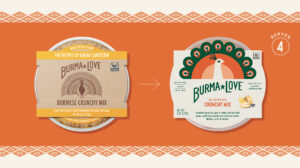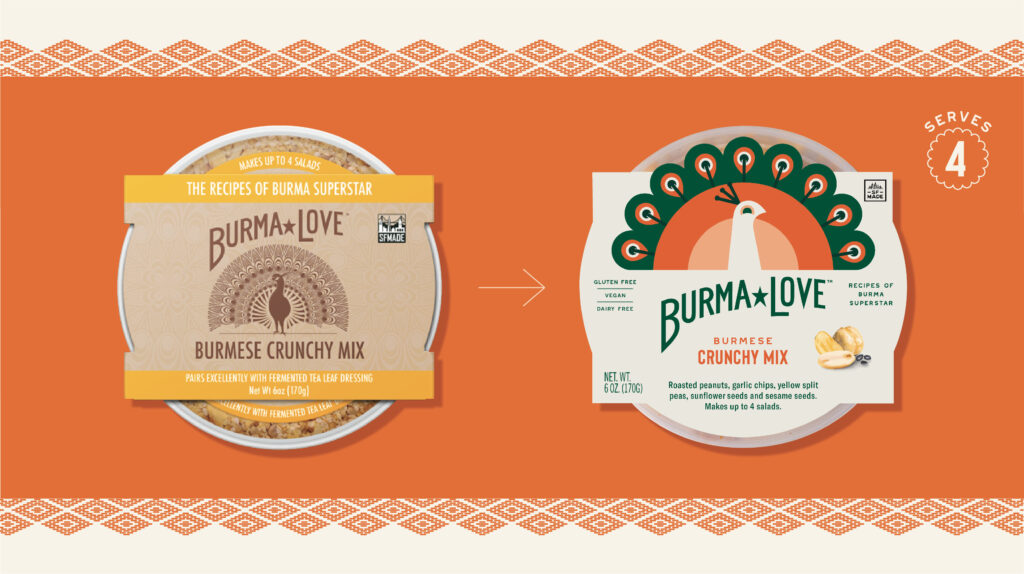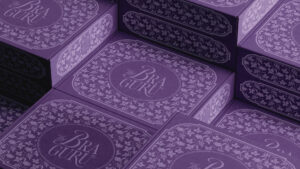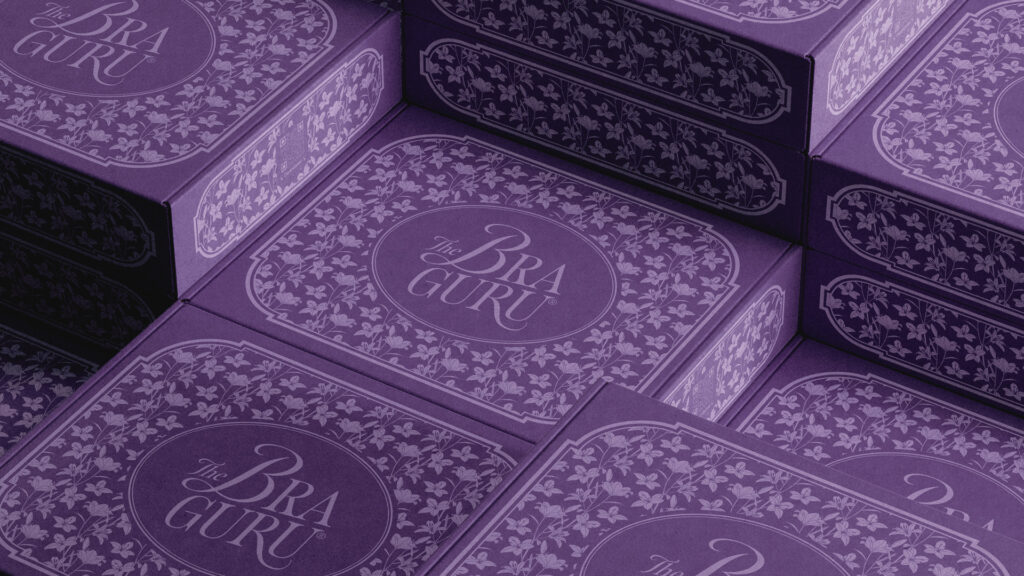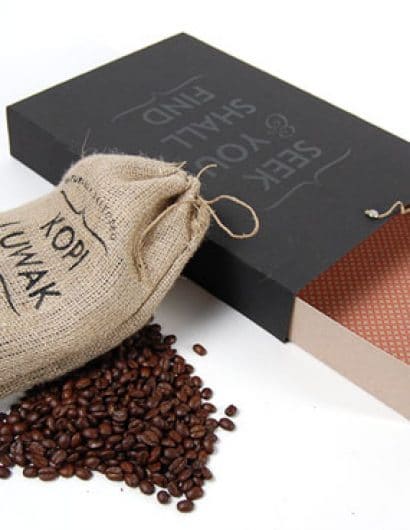
Designed by Colin Dunn | Country: United States
“As part of a larger branding project, I handmade a burlap coffee bag, carryout box and sugar packets for a very posh café that I named KOPI. The imaginary café imports coffee beans from Indonesia known as Kopi Luwak. The word Kopi is Indonesian for coffee and Luwak is the local name of the Asian Palm Civet, the animal responsible for this very naturally produced coffee.
A pound of Kopi Luwak can cost as much as $600, making it the most expensive coffee in the world. The branding elements borrow from Indonesian architecture, while the overarching aesthetic was “otherworld.” KOPI operates as a “pop-up” café, moving from city to city and distributing from unadvertised locations. In keeping with the secrecy of the brand, the logo doesn’t appear anywhere on the packaging. However other brand elements such as color, typeface and the holding shape of the logo are utilized. When these elements are introduced into public they would indicate to the informed consumer that KOPI is nearby, if only temporarily.”






